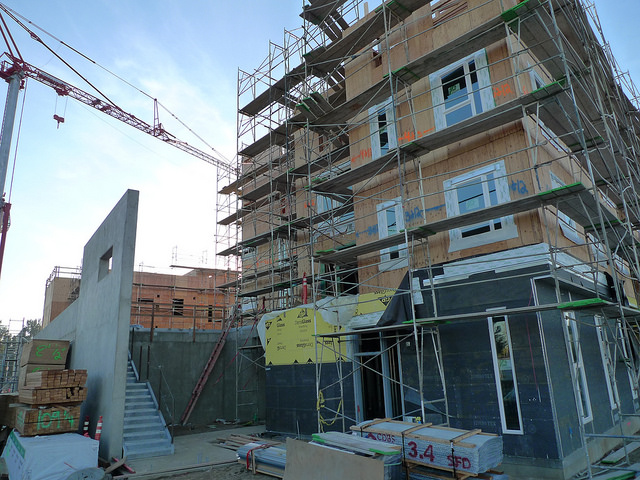
February 28, 2017; Minneapolis Star Tribune
Nobody likes tax season, but affordable housing developers have an extra reason to be anxious this year. After President Donald Trump promised to slash the corporate tax rate, investors are hesitant to buy affordable housing tax credits, leading to a serious dearth of cash for affordable housing developers.
The Low-Income Housing Tax Credit, or LIHTC, is an $8 billion federal program, which translates to hundreds of millions of dollars in funding for affordable housing. As the Minneapolis Star Tribune explained,
The low-income housing tax credit program starts with the Internal Revenue Service, which allocates tax credits to state agencies that divvy them up among developers. Those developers sell the tax credits to investors for cash to fund their projects. For investors, part of the appeal of buying tax credits is a 10-year, dollar-for-dollar tax write-off. Purchasing $1 million in low-income housing tax credits translates to a $10 million tax break over time.
Between 1987 and 2014, the LIHTC was responsible for over 40,000 projects involving nearly three million units of affordable housing. Just between 2007 and 2013, the rate of shelter use declined by over 10 percent. That’s nearly 150,000 fewer people in shelters, and that’s not counting the LIHTC-funded units that went to people who didn’t start in a shelter but came straight from the streets or from homes they could no longer afford. The LIHTC finances 90 percent of the affordable rental housing in the U.S.
LIHTC units are required to be affordable for families making 60 percent or less of an area’s median income for at least 15 years, giving time for families to get on their feet and establish savings before having to pay the market rate for housing—which is rapidly increasing in cities across the United States.
Sign up for our free newsletters
Subscribe to NPQ's newsletters to have our top stories delivered directly to your inbox.
By signing up, you agree to our privacy policy and terms of use, and to receive messages from NPQ and our partners.
Now, developers are halting projects, worried they may not have the funds to finish. The value of a credit dropped from over a dollar to under a dollar around the time of the presidential election and investors began to back off from prior commitments to buy.
“It is disrupting a market that was really working well,” said Warren Hanson, president and CEO at the Greater Minnesota Housing Fund. Developments in Minneapolis could be short as much as $1.3 million, depending on whether investors follow through on their commitments.
It’s not the investors’ fault that they can’t say whether they’ll buy. Donald Trump has promised to reduce the corporate tax rate from 35 percent to 15 percent, though whether he’ll actually follow through, and whether Congress will pass legislation enacting it, is yet to be seen. If investors honor their current commitments and the tax rate does drop, lowering their tax liability, they’ll have bought credit for taxes they don’t have to pay. They’ll have overspent for nothing, since affordable housing doesn’t have an ROI. That’s a betrayal of their shareholders and not likely to win them business in the future.
The uncertainty is bad for investors, who can’t manage their tax liability; it’s bad for developers, who have to hold onto as much funding as they can before they know if a project will actually be built; it’s certainly bad for low-income families, who may lose the best chances they have for affordable housing. And, as WBUR pointed out, it’s bad for construction workers, whose workloads may drop significantly.
“We probably have four projects that were slated to start in the first quarter that are being delayed, and the answers we’re getting for clients on those particular jobs are, we’re working on it,” said Joe Rettman, who heads NEI General Contracting in Massachusetts. Rettman says that a quarter of his work is funded by low-income housing tax credits.
The loss of the LIHTC helps nobody, from the corporate investors to the construction workers. It eliminates housing, jobs, and capital from the market. It has, therefore, exactly the opposite effect that the tax cuts are intended to have—it cuts jobs instead of creating them. If a program is serving both the top and the bottom of the income spectrum, there can be no logical reason to do away with it—though whether that will save the LIHTC is anyone’s guess.— Erin Rubin











